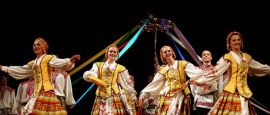Getting around Belarus
As Belarus is a relatively small country, there are currently no regular domestic flights available.
A-class roads (highways and roads with higher speed limits) in Belarus are generally good quality. In rural areas, you'll find roads that are a little less smooth and may share them with horse carriages from time to time. Checkpoints are common on roads and border crossings in Belarus.
Vehicles must also be fitted with an on-board unit to pay for toll electronically. The system is known as BelToll. A fine is imposed on drivers who do not have an on-board unit in the vehicle.
Roads in Belarus are divided into two categories: A-class (intercity highways, with higher speed limits) and B-class (smaller roads found within towns and cities).
Cars can be hired with or without a driver in Belarus, and most of the reputable agencies are represented at Minsk's major hotels. Hertz (www.hertz.co.uk), Europcar (www.europcar.co.uk) and Avis (www.avis.co.uk) are also available at the International airport in the capital. Prices are similar to the rest of Europe. It should be noted that most traffic signs are in Cyrillic script only, so hiring a car with a driver is recommended.
Taxis are commonplace in Belarus, but they do tend to charge visitors more money. You can typically mitigate the cost of a trip by negotiating a price beforehand, or alternatively, you can book through an app such as the Yandex.Taxi or NextApp apps on your smartphone. Uber also works in Minsk via Yandex. In Minsk, visitors can also use private minibuses (marshrutka) by hopping on and off at official stops used by buses and trolleybuses.
During the warm season, a city rental network exists for those interested in cycling around Minsk's city parks and bike paths – just unlock a bicycle and dock it when you're done. If you can’t find a station with rental network bikes, you can rent a bicycle or a scooter from SpeedyGo (https://speedygo.by/).
There are many suburban, inter-city and international buses that operate in Belarus. Checking schedules and purchasing tickets prior to your trip is recommended and can be done through http://ticketbus.by/.
In Minsk, there are over 100 bus routes. Purchase your ticket at a kiosk and validate it once you are on board.
The speed limit is 60kph (37mph) in built-up areas, 90kph (55mph) outside built-up areas and 110kph (69mph) on highways. Motorists who have held a driving licence for under two years must not exceed 70kph (43mph). Those driving on an international licence are able to do so for a 3-month period, after which they will be required to apply for a Belarusian driver’s licence.
Vehicles should have lights on at all times from 1 November to 31 March. All vehicles should be equipped with a first-aid kit, fire extinguisher, warning triangle, winter tyres (between November and March) and an on-board unit for the toll. There is also a zero-tolerance policy towards drink-driving, with a blood-alcohol limit of 0.
It's possible to drive using your national driving licence, but often an International Driving Permit is preferred. If you are staying (and driving) in Belarus for more than 3 months, you will be required to sit for your Belarusian licence which includes a 3-month driving school course as well as knowledge and driving skills tests administered by the State Traffic Inspection. When travelling by private vehicle, travellers must be able to produce ownership documents or a letter of 'power of attorney' at customs offices at border crossings; only originals will be accepted. Drivers must have a Green Card insurance certificate, which can be bought when entering Belarus. Drivers should stop when instructed, and have the vehicle documentation ready, otherwise face a fine and delay.
Public transport in Minsk is cheap and efficient. Minsk has an underground metro system with two lines covering 29 stations across central Minsk, and currently has plans for further expansion with a third line. The metro runs from 0530 to 0040. To pay for the metro, you can either use a token (for one trip) or a contactless smart card (for multiple trips). During rush hour, between 0700 and 0900 or between 1700 and 1900, trains generally arrive every 2-3 minutes.
Buses, trams and trolleybuses run from 0535 to 0030. You can buy tickets for buses, trams and trolleybuses at newsstands or kiosks and you must punch them on board. You can also purchase a travel card for a certain number of trips (10, 20, 30, 40 and 50 trips are available), which includes metro and public transport.
A Universal travel card, which covers all modes of public transports including city lines of Belarusian Railways, is also available from three to 30 days.
Services run regularly from Minsk to all other towns. For more information, contact Belarus Railways (www.rw.by). Keeping an eye out onfor your luggage is advised as theft on trains have is not out of the ordinarybeen reported.
Do you have any Feedback about this page?
© 2025 Columbus Travel Media Ltd. All rights reserved. No part of this site may be reproduced without our written permission, click here for information on Columbus Content Solutions.




 You know where
You know where